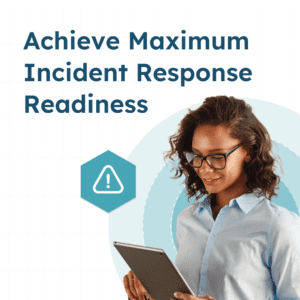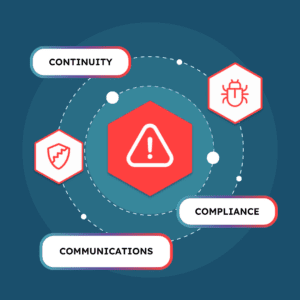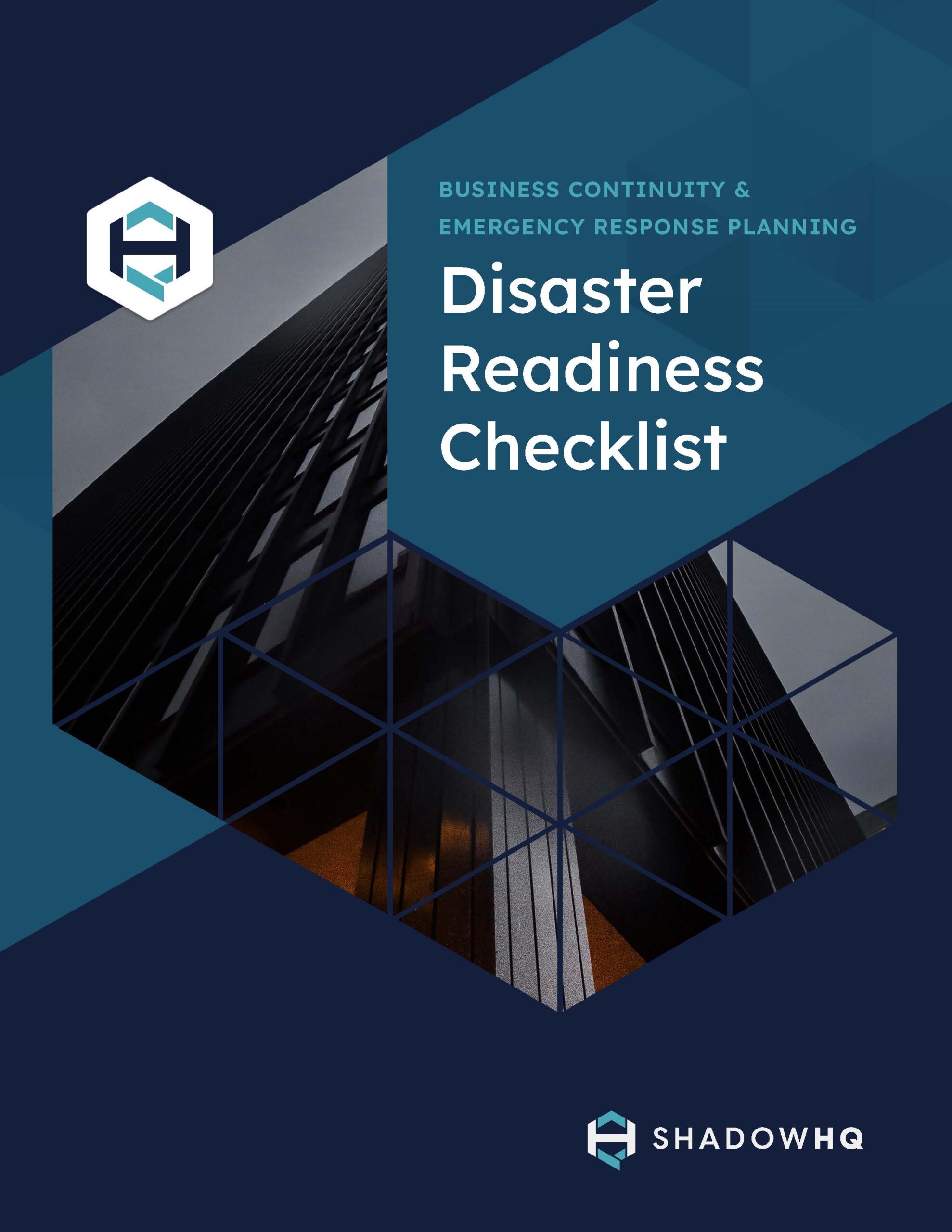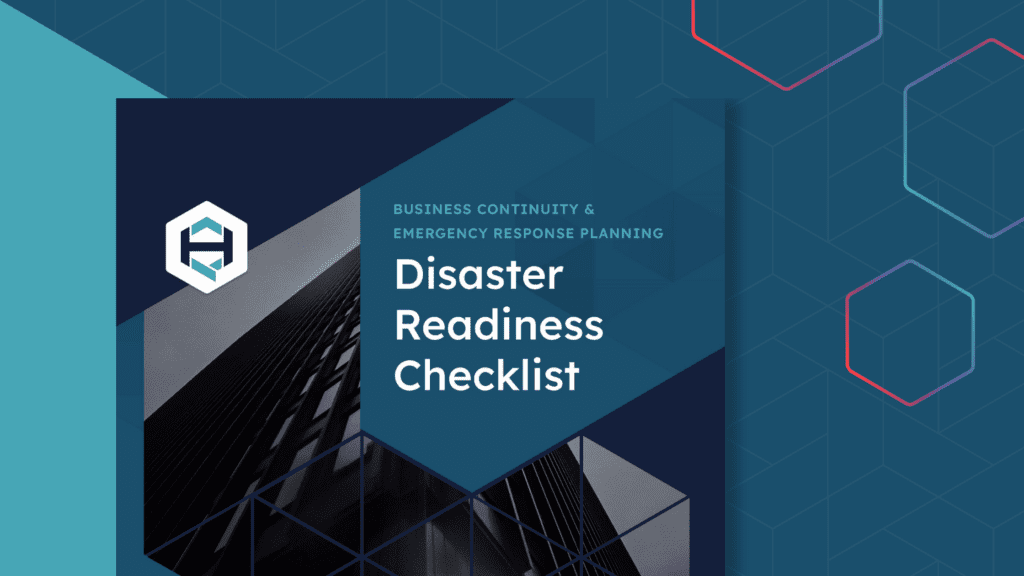10 Steps to Achieve Maximum Incident Response Readiness

Incident response is essential for organizations aiming to minimize the impact of security incidents or other possible events that can jeopardize business continuity.
A well-prepared incident response plan ensures that an organization can swiftly and effectively address security breaches, protecting its information assets and maintaining business continuity.
Yet, one study found that 77% of enterprises don’t have a cybersecurity incident response plan. These enterprises will be left coming up with solutions in the heat of the moment rather than having a prepared guide to follow as they try to contain and recover from the incident.
It’s crucial to have a prepared incident response plan to ensure continuity, compliance, and communications. So, let’s break down ten steps to enhance your incident response readiness, giving your company the best chance at ensuring business continuity and minimizing the damage.
1. Establish an Incident Response Team
Creating an experienced and dedicated incident response team is crucial for effectively responding to various possible incidents. This team acts as the frontline defense against threats and is responsible for following the incident response plan.
The team covers all bases by including members from IT, legal, human resources, and public relations. Each member should have clearly defined roles and responsibilities, ensuring a coordinated and rapid response to incidents.
2. Conduct a Risk Assessment
A thorough risk assessment involves identifying and evaluating potential vulnerabilities within an organization’s IT infrastructure, facilities, or workforce. This step is necessary to understand your organization’s specific threats and weaknesses in your systems and processes.
By identifying these risks, you can better tailor your incident response plan to protect against likely attack vectors and vulnerabilities. While risk assessments are certainly not a small task, they’re certainly a mission-critical process.
3. Develop an Incident Response Plan
Developing a response plan prepares an organization to handle security incidents effectively. The goal of this plan is to act as a guide through the process of managing and mitigating security breaches or attacks, encompassing several key phases:
- Preparation: Establish clear roles and responsibilities for the team. Ensure necessary tools and communication systems are in place and conduct regular training to maintain readiness.
- Identification and detection: Define methods for detecting incidents using indicators of compromise and monitoring systems. Outline reporting procedures for both automated systems and personnel.
- Containment: Implement immediate strategies to prevent further damage, followed by a post-incident review to better secure the network. This includes steps for data preservation and system isolation.
- Eradication: Identify and eliminate the incident’s root cause, such as malware or vulnerabilities, ensuring systems are cleaned and secured against future threats.
- Recovery: Restore affected systems and services to normal operations, carefully monitoring for signs of recurrence. Communicate recovery efforts to stakeholders.
- Post-incident analysis: Review the incident to understand its cause and impact. Identify lessons learned and areas for improvement in the response process.
- Regular updates: The team must reflect new threats, technological changes, and insights from recent incidents and drills.
A well-maintained response plan is crucial for swift and effective response to cybersecurity incidents, minimizing impact and facilitating a quick recovery.
4. Set Up Detection and Monitoring Tools
Implementing early detection tools and processes is key to identifying security incidents before they escalate. Intrusion Detection Systems (IDS) and Security Information and Event Management (SIEM) systems are crucial in monitoring network traffic and alerting teams to suspicious activities.
Regular network monitoring supports these efforts by providing ongoing system performance and security visibility.

5. Establish Communication Protocols
Clear communication is crucial during a security incident. Establishing predefined communication protocols ensures that information flows seamlessly between the incident response team, organizational management, and other stakeholders.
This process requires specifying the means of communication, such as emails, secure messaging systems, or dedicated incident response platforms like ShadowHQ. The protocols should also define who should be notified at each stage of an incident.
External communication strategies with customers, regulators, and the public are essential, especially for managing reputational damage and legal obligations. A well-defined communication protocol helps maintain order during an incident, ensuring all parties are informed and coordinated in their response efforts.
6. Create an Incident Classification Scheme
An incident classification scheme categorizes security incidents based on their severity, impact, and type. This system enables organizations to quickly assess the nature of an incident and prioritize their response accordingly.
This classification considers factors such as the sensitivity of the compromised data, the extent of the system’s impact, and potential financial or reputational damage.
Organizations can allocate their resources more effectively by prioritizing incidents, focusing on mitigating the most critical threats first. This strategic approach to incident management helps minimize damage and streamline the response process.
7. Prepare for Legal and Regulatory Compliance
Cybersecurity incidents often have legal and regulatory implications, especially when sensitive data is compromised. Understanding the legal framework and compliance requirements specific to an organization’s industry and geographic location is essential.
Your teams need to understand regulations regarding data breach notifications, customer privacy protections, and industry-specific security standards. Preparing for compliance involves establishing procedures for legal documentation, evidence preservation, and timely reporting to authorities.
By aligning the incident response process with legal and regulatory requirements, organizations can avoid significant fines, legal challenges, and damage to their reputation.
8. Conduct Training and Awareness Programs
Ongoing training and awareness programs are vital for preparing the incident response team and the broader organization to handle security incidents effectively.
These programs should cover the organization’s incident response plan, specific security policies, and general cybersecurity awareness topics. Simulated incident response exercises, such as tabletop exercises or full-scale drills, provide practical experience and help identify areas for improvement in the team’s response capabilities.
Cultivating a culture of cybersecurity awareness across the organization encourages employees to act as a first line of defense, recognizing and reporting potential security threats before they escalate.
9. Establish Relationships with External Agencies
Collaboration with external agencies, such as law enforcement, government cybersecurity agencies, and industry-specific incident response teams, enhances an organization’s ability to respond to major incidents.
These partnerships can provide access to specialized expertise, threat intelligence, and additional resources during a crisis. Establishing these relationships before an incident occurs ensures a smoother coordination and response effort when time is of the essence.
Additionally, participating in industry-specific cybersecurity forums and working groups can offer insights into emerging threats and best practices, further strengthening an organization’s cybersecurity posture.
10. Review and Learn from Incidents
After an incident, conducting a thorough review is critical for continuous improvement. This process involves analyzing what worked well and which areas require corrective action.
Insights gained from these reviews should be used to refine the incident response plan and training programs. The ultimate goal of post-incident review is to make sure that the organization learns from each incident and is better prepared for future challenges.
Is Your Organization Prepared for a Disaster?
Companies across all industries can significantly enhance their readiness to respond to incidents by following the steps we explored above. This proactive approach helps effectively manage incidents when they occur and contributes to a stronger overall cybersecurity posture.
Being prepared for a disaster makes all the difference once a disaster strikes. That’s why ShadowHQ offers a leading provider of secure, out-of-band communications to keep your teams communicating.
One question remains: how prepared is your organization to handle and recover from a disaster? Use our disaster readiness checklist to better understand your level of incident readiness and to uncover any gaps in your processes.
EWEBINAR
Experience the ShadowHQ platform
Walk through a cyber breach scenario in a 15 minute demo.


GUIDE DOWNLOAD
Disaster Readiness Checklist
When an emergency happens, every minute counts.



